Chemical Free Oven Cleaning: Is your oven looking less like a culinary haven and more like a burnt offering? Let’s be honest, tackling oven grime is nobody’s favorite chore. But what if I told you that you could achieve a sparkling clean oven without resorting to harsh chemicals that leave behind lingering odors and potential health concerns?
For generations, resourceful homemakers have relied on natural cleaning solutions, often passed down through families. Before the advent of commercially produced oven cleaners, ingredients like baking soda and vinegar were the go-to for tackling stubborn grease and baked-on messes. This tradition reflects a deeper connection to our homes and a desire to create healthy, safe environments for our loved ones.
In today’s world, where we’re increasingly conscious of the products we use and their impact on our health and the environment, the need for effective, non-toxic cleaning methods is more important than ever. Many commercial oven cleaners contain harsh chemicals that can irritate the skin, eyes, and respiratory system. Plus, they can leave behind a lingering chemical smell that can affect the taste of your food. That’s why I’m excited to share some simple, yet powerful, chemical free oven cleaning tricks and DIY solutions that will leave your oven spotless and your conscience clear. Get ready to ditch the harsh chemicals and embrace a healthier, more sustainable way to clean!
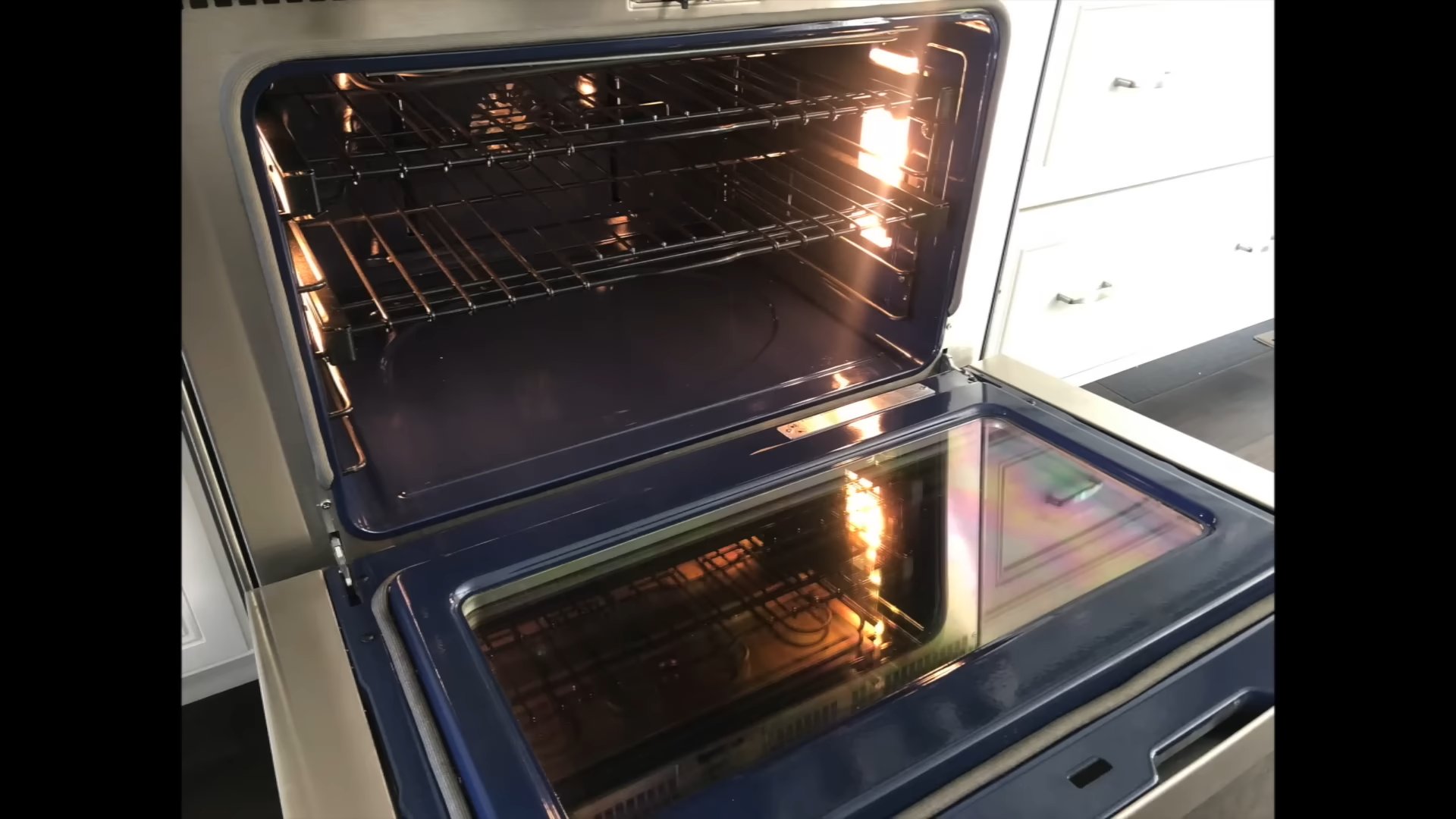
DIY Chemical-Free Oven Cleaning: A Sparkling Clean Oven the Natural Way
Okay, let’s face it, cleaning the oven is probably on everyone’s list of least favorite chores. The harsh chemicals, the lingering smell, the sheer effort – it’s enough to make anyone want to order takeout forever! But what if I told you there’s a way to get your oven sparkling clean without resorting to those nasty chemicals? That’s right, we’re going natural! This method uses just a few simple ingredients you probably already have in your pantry: baking soda, vinegar, and water. Trust me, it’s easier than you think, and the results are amazing.
What You’ll Need
Before we dive in, let’s gather our supplies. Here’s what you’ll need for this chemical-free oven cleaning adventure:
* Baking Soda: This is our main cleaning agent. It’s a mild alkali that helps to dissolve dirt, grease, and grime.
* White Vinegar: The acid in vinegar reacts with the baking soda to create a powerful cleaning fizz.
* Water: We’ll use water to make a paste and to rinse everything clean.
* Spray Bottle: For easy application of the vinegar.
* Spatula or Scraper: To help remove stubborn baked-on messes. A plastic one is ideal to avoid scratching.
* Rubber Gloves: To protect your hands from the baking soda paste, which can be a bit drying.
* Sponge or Cloth: For wiping down the oven.
* Old Towels or Rags: For soaking up spills and messes.
* Small Bowl: For mixing the baking soda paste.
* Optional: Essential Oils (Lemon, Orange, or Tea Tree): A few drops can help to freshen up the oven and mask any lingering vinegar smell.
Preparing Your Oven for Cleaning
Before we get our hands dirty, let’s prep the oven. This will make the cleaning process much smoother.
1. Remove Oven Racks: Take out all the oven racks and set them aside. We’ll clean them separately later.
2. Remove Any Loose Debris: Use a dry cloth or paper towel to wipe up any loose crumbs or food particles from the bottom of the oven.
3. Protect the Floor: Place old towels or newspaper around the base of the oven to catch any drips or spills.
Making and Applying the Baking Soda Paste
This is where the magic happens! We’re going to create a powerful cleaning paste that will loosen all that baked-on gunk.
1. Mix the Paste: In your small bowl, combine 1/2 cup of baking soda with enough water to form a thick, spreadable paste. You’ll want a consistency similar to frosting. Add water gradually, mixing as you go, until you reach the desired consistency.
2. Apply the Paste: Using your hands (with gloves on!), spread the baking soda paste all over the interior surfaces of your oven. Be sure to coat the back, sides, top, bottom, and door. Avoid the heating elements! You want a nice, even layer.
3. Tackle Stubborn Spots: For areas with particularly stubborn baked-on messes, apply a thicker layer of the paste.
4. Let it Sit: This is the key! Let the baking soda paste sit in your oven for at least 12 hours, or even better, overnight. The longer it sits, the more time it has to loosen the grime.
Cleaning the Oven Racks
While the baking soda paste is working its magic inside the oven, let’s tackle those racks.
1. Soak the Racks: The easiest way to clean oven racks is to soak them in a bathtub filled with hot, soapy water. Add about 1/2 cup of dish soap to the water.
2. Add Baking Soda (Optional): For extra cleaning power, you can also add 1/4 cup of baking soda to the water.
3. Soak Overnight: Let the racks soak overnight. This will loosen the baked-on grease and grime.
4. Scrub the Racks: After soaking, use a scrub brush or sponge to scrub the racks clean. You may need to use a bit of elbow grease, but the soaking should have made the job much easier.
5. Rinse and Dry: Rinse the racks thoroughly with clean water and dry them with a towel.
Removing the Baking Soda Paste and Final Cleaning
Okay, it’s been at least 12 hours, and the baking soda paste has done its job. Now it’s time to remove it and give the oven a final cleaning.
1. Spray with Vinegar: Fill your spray bottle with white vinegar. Generously spray the interior surfaces of the oven, covering the baking soda paste. The vinegar will react with the baking soda, creating a fizzing action.
2. Wipe Away the Paste: Using a damp sponge or cloth, wipe away the baking soda paste. The fizzing action should have loosened the grime, making it easy to remove. You may need to rinse your sponge or cloth frequently.
3. Scrape Stubborn Residue: For any stubborn residue that remains, use your spatula or scraper to gently scrape it away. Be careful not to scratch the oven surface.
4. Rinse Thoroughly: Once you’ve removed all the baking soda paste, rinse the interior of the oven thoroughly with clean water. Use a damp sponge or cloth to wipe away any remaining residue.
5. Dry the Oven: Use a clean, dry towel to dry the interior of the oven.
6. Replace the Racks: Once the oven is completely dry, replace the clean oven racks.
7. Optional: Freshen the Air: To freshen the air inside the oven, you can place a small bowl of vinegar or a few lemon slices inside and heat the oven on low for about 30 minutes.
Dealing with Extra Stubborn Stains
Sometimes, even with the baking soda and vinegar, you might encounter some extra stubborn stains. Don’t worry, we have a few tricks up our sleeves!
* For Burnt-On Sugar: If you have burnt-on sugar, try making a paste of baking soda and hydrogen peroxide. Apply the paste to the stain and let it sit for a few hours before wiping it away.
* For Grease Splatters: For stubborn grease splatters, try using a degreasing dish soap. Apply the soap to the stain, let it sit for a few minutes, and then wipe it away.
* For Really Tough Stains: If all else fails, you can try using a commercial oven cleaner as a last resort. However, be sure to follow the manufacturer’s instructions carefully and wear appropriate safety gear.
Tips for Keeping Your Oven Clean
Now that your oven is sparkling clean, let’s talk about how to keep it that way!
* Wipe Up Spills Immediately: The best way to prevent baked-on messes is to wipe up spills as soon as they happen.
* Use Oven Liners: Oven liners can help to catch drips and spills, making cleanup much easier.
* Clean Regularly: Try to clean your oven at least once a month, or more often if you use it frequently.
* Consider a Self-Cleaning Oven: If you’re in the market for a new oven, consider one with a self-cleaning feature. However, even self-cleaning ovens can benefit from occasional manual cleaning.
Why Choose Chemical-Free Cleaning?
You might be wondering why go through all this effort when you could just use a commercial oven cleaner? Well, there are several good reasons to choose chemical-free cleaning:
* Healthier for You: Commercial oven cleaners contain harsh chemicals that can be harmful to your health. By using natural ingredients like baking soda and vinegar, you can avoid exposing yourself to these chemicals.
* Better for the Environment: Chemical oven cleaners can also be harmful to the environment. Natural cleaning products are biodegradable and less likely to pollute our waterways.
* Safer for Your Family: If you have children or pets, you may be concerned about the safety of using harsh chemicals in your home. Natural cleaning products are a safer alternative.
* More Affordable: Baking soda and vinegar are inexpensive and readily available, making them a more affordable option than commercial oven cleaners.
Troubleshooting Common Issues
Even with the best instructions, you might run into a few snags. Here’s how to troubleshoot some common issues:
* Baking Soda Paste is Too Dry: If your baking soda paste is too dry, simply add a little more water until you reach the desired consistency.
* Baking Soda Paste is Too Runny: If your baking soda paste is too runny, add a little more baking soda until it thickens up.
* Vinegar Smell is Too Strong: If you’re sensitive to the smell of vinegar, you can add a few drops
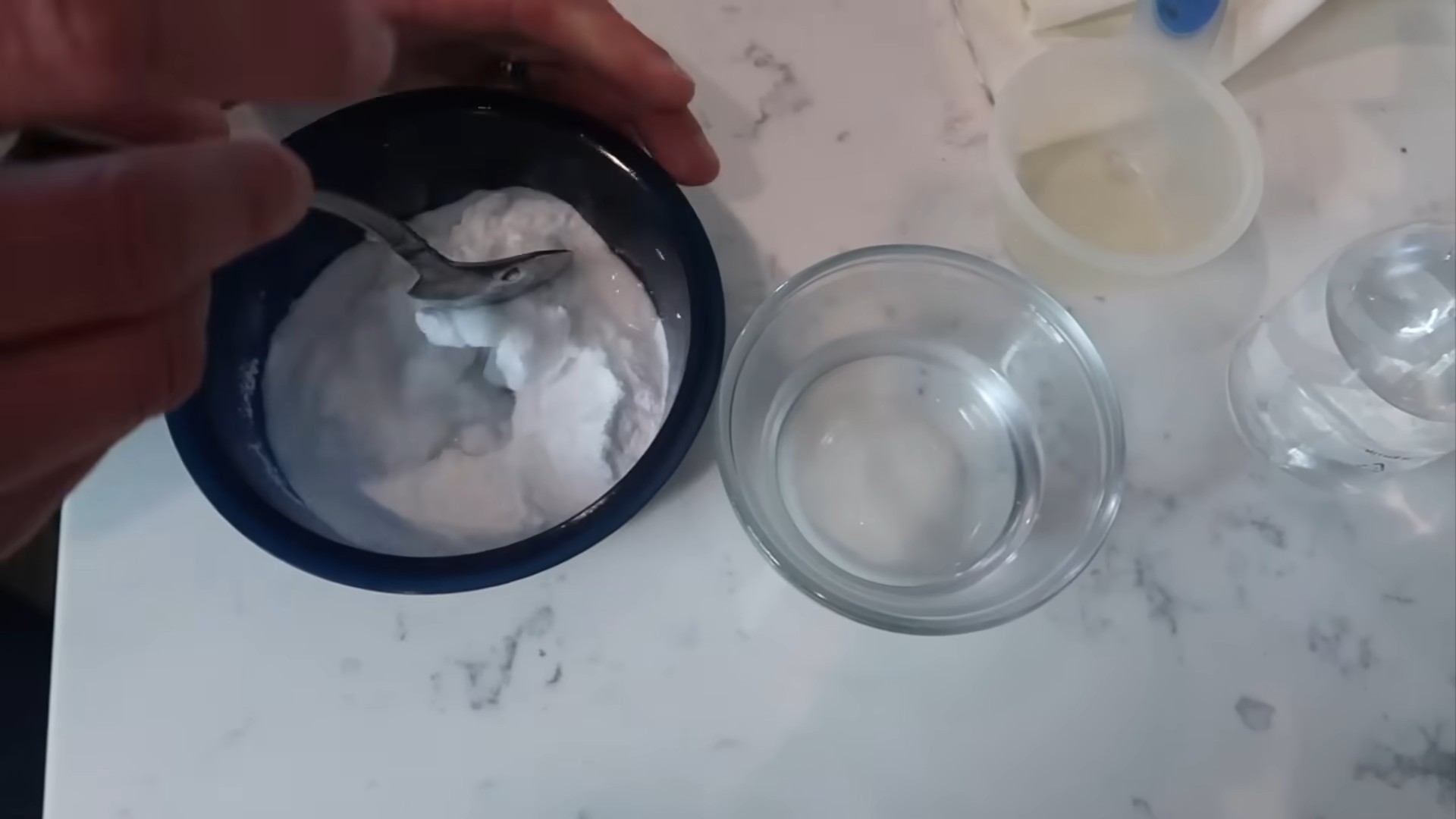
Conclusion
So, there you have it! Ditching harsh chemicals and embracing this simple, effective, and budget-friendly method for chemical free oven cleaning is a game-changer. Not only will you be saying goodbye to those lingering chemical smells that can taint your next baking masterpiece, but you’ll also be creating a safer and healthier environment for yourself and your loved ones. Think about it: no more worrying about accidental spills or fumes harming your pets or children. This isn’t just about cleaning; it’s about conscious living.
But the benefits extend beyond just safety. This DIY method is incredibly effective at tackling even the most stubborn baked-on grime. The combination of baking soda and vinegar creates a powerful, yet gentle, cleaning action that lifts away grease and food residue without scratching or damaging your oven’s interior. You’ll be amazed at how easily the dirt wipes away after letting the mixture sit overnight.
And the best part? You probably already have everything you need in your pantry! No need to run to the store and spend a fortune on expensive cleaning products. This method is not only effective and safe, but it’s also incredibly economical.
Looking to customize your cleaning experience? Consider adding a few drops of your favorite essential oil to the baking soda paste for a subtle, fresh scent. Lemon, lavender, or tea tree oil are all excellent choices. For particularly stubborn stains, you can try adding a sprinkle of salt to the baking soda paste for extra scrubbing power. Just be gentle to avoid scratching the oven surface. Another variation is to use a slightly damp pumice stone for those really stuck-on bits, but test it in an inconspicuous area first to ensure it doesn’t scratch.
We understand that trying something new can sometimes feel daunting, but trust us, this chemical free oven cleaning method is incredibly easy and straightforward. The results are well worth the minimal effort involved. Imagine opening your oven to a sparkling clean interior, ready to bake your next culinary creation.
So, what are you waiting for? Give this DIY trick a try and experience the satisfaction of a clean oven without the harsh chemicals. We’re confident that you’ll be amazed by the results. And don’t forget to share your experience with us! We’d love to hear your tips, variations, and before-and-after photos. Let’s create a community of clean oven enthusiasts who are passionate about safe and effective cleaning methods. Share your stories on social media using #ChemicalFreeOvenCleaning and inspire others to make the switch! Let’s all work together to create a healthier and cleaner kitchen environment, one oven at a time. We are excited to see your results and hear about your journey to a sparkling clean, chemical-free oven!
Frequently Asked Questions
Is this method safe for self-cleaning ovens?
That’s a great question! While this method is generally safe for most ovens, it’s crucial to check your oven’s manual before proceeding, especially if you have a self-cleaning oven. Some manufacturers advise against using any cleaning products, even natural ones, as they can potentially damage the self-cleaning mechanism. If your manual explicitly prohibits using cleaning products, it’s best to err on the side of caution and avoid this method. However, if your manual doesn’t mention any restrictions, this chemical free oven cleaning method should be perfectly safe. You can also contact the oven manufacturer directly to confirm.
How often should I clean my oven using this method?
The frequency of cleaning depends on how often you use your oven and how much food spills inside. As a general rule, cleaning your oven every 3-6 months is a good practice to prevent excessive buildup of grease and grime. However, if you frequently bake or roast, you might want to clean it more often, perhaps every 1-2 months. Regularly wiping up spills as they happen can also help extend the time between deep cleans. Remember, a little maintenance goes a long way!
What if the baking soda paste dries out and becomes difficult to remove?
If the baking soda paste dries out and hardens, don’t panic! Simply dampen a sponge or cloth with warm water and gently rub the paste to rehydrate it. You can also use a spray bottle filled with water to mist the paste. Let it sit for a few minutes to soften, and then wipe it away with a clean cloth. For particularly stubborn areas, you can use a plastic scraper to gently loosen the dried paste before wiping. Avoid using metal scrapers, as they can scratch the oven surface.
Can I use this method on the oven door glass?
Absolutely! This method is excellent for cleaning oven door glass. The baking soda paste will effectively remove baked-on grease and grime without scratching the glass. Apply the paste to the glass, let it sit for at least 30 minutes (or overnight for heavily soiled glass), and then wipe it away with a damp cloth. For a streak-free finish, you can use a glass cleaner after wiping away the baking soda paste.
What if I don’t have vinegar? Can I use something else?
While vinegar is a key ingredient in this chemical free oven cleaning method, you can try using lemon juice as a substitute. Lemon juice has natural cleaning and degreasing properties similar to vinegar. Simply mix equal parts lemon juice and water in a spray bottle and use it in place of the vinegar. Keep in mind that lemon juice may not be as effective as vinegar for removing stubborn stains, but it’s a good alternative if you don’t have vinegar on hand.
The smell of vinegar is too strong for me. Is there anything I can do?
We understand that the smell of vinegar can be off-putting for some people. To minimize the vinegar smell, you can try using a milder type of vinegar, such as apple cider vinegar. You can also add a few drops of your favorite essential oil to the vinegar solution to mask the smell. Lemon, lavender, or orange essential oils are all good choices. Make sure to ventilate your kitchen well while cleaning to further reduce the odor.
Is this method effective for cleaning the oven racks?
Yes, this method is also effective for cleaning oven racks. You can soak the racks in a solution of hot water and baking soda for several hours or overnight. For heavily soiled racks, you can add some dish soap to the soaking solution. After soaking, scrub the racks with a brush or sponge to remove any remaining grime. Rinse thoroughly with water and dry before placing them back in the oven. Alternatively, you can apply the baking soda paste directly to the racks, let it sit for a few hours, and then scrub and rinse.
Will this method remove burnt sugar from the bottom of the oven?
Burnt sugar can be particularly challenging to remove. For burnt sugar, we recommend creating a slightly thicker baking soda paste and applying it directly to the affected area. Let it sit overnight. The next day, use a plastic scraper to gently lift the burnt sugar. You may need to repeat the process a few times for particularly stubborn areas. Adding a sprinkle of salt to the baking soda paste can also provide extra scrubbing power. Remember to be patient and persistent, and avoid using excessive force, which could damage the oven surface.

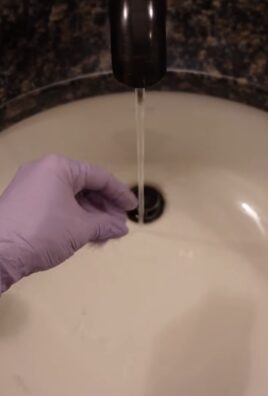
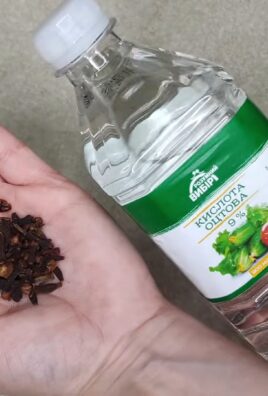
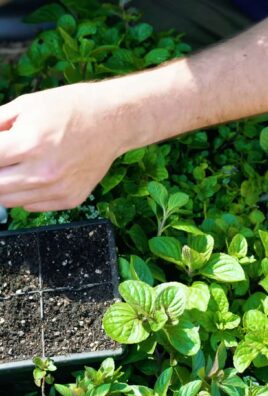
Leave a Comment